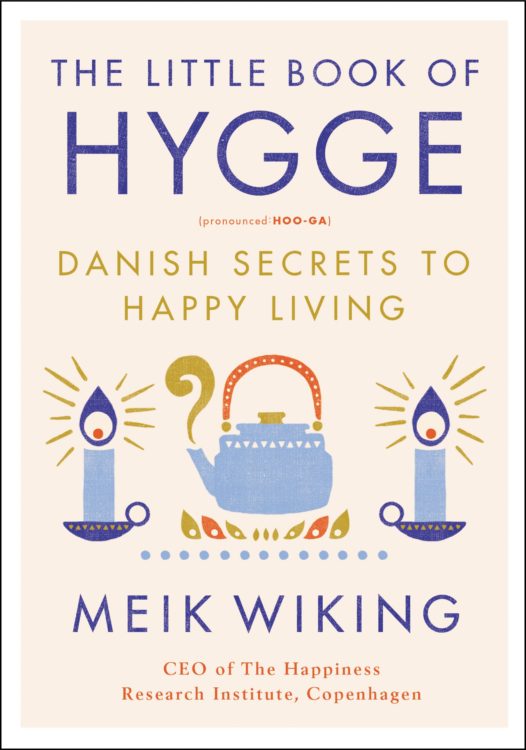Cultural Composting In The Chinese Year Of The Rooster
Is 2017 The Year Patriarchy Comes Home To Roost?
It’s the Chinese Year of the Rooster and even Bill Nye the Science Guy is saying the new leader of the free world is going to have a “catastrophic effect on the planet.” How did we get here? Roosters, warlords and worshippers of patriarchy share an entangled history worth noting as our Tweeter-in-Chief crows his plans for dismantling civilization as we know it.
Legend and the Smithsonian Magazine say roosters were discovered in Greece in the fifth century B.C by Athenian general Themistocles on his way to confront the invading Persian forces. The warlord stopped to watch two cocks fighting by the side of the road, then summoned his troops to capture them, initiating a now millennia-old tradition of cockfighting and drive thru chicken nuggets.

Our ancient patriarchal culture’s love for violence against the weak led to hundreds of years of training roosters to fight to the death in gambling pits. Survivors of this bloody sport went on to stud a lineage of aggressive fowl whose progeny occasionally swims to the surface of a now mostly domesticated gene pool. In my family’s early days of flock management we marveled at the roosters who courageously stepped into the unprotected open, crowing defiantly at low circling hawks while the hens ran for cover. When our roosters discovered new corn or grubs, they cackled a singular type of alarm, then stood back and allowed the hens to eat first.
Almost every rooster we’ve raised over 15 years on our small Virginia farm was consistent in his commitment to protect and serve the flock. Almost every one… then there were the jittery guys who stalked me up the hill from the chicken house or jumped a child from behind a fence post, unsheathed talons going for soft bellies and throats. Sometimes, the hackle-raised, erratic, indefatigable energy seemed a desperate prayer to predators for relief.
The first time I worriedly asked an experienced farmer friend for advice, she hung her head and nearly whispered, “Well, those are the throwbacks. It’s a shame they were trained to fight in the past. Sometimes you get one.”
That year we wept while drawing the ISO New Home poster, the kind feed and seed stores and poultry clubs sport regularly on their community boards. The popularity of the Backyard Poultry Movement also spawned rooster sanctuaries, founded by those sympathetic to the unwanted throwbacks. A few Internet videos promise an aggressive rooster can be turned into the family darling, and maybe, with lots of therapy, they can. But a rehabilitated cockfighter seems a like a vision born of urban denial when you’ve run for your life from a mid-air, squawking ninja attack.
And then there was Henster.
After the coyotes moved into our woods and took our last rooster, a formerly nondescript Araucana hen began to crow. She even grew a small cock’s comb and a few green tail feathers. We discovered her transformation was acknowledged by poultry farmers: that a hen could step forward and shape-shift into a rooster for the good of the flock. Later that year, when we rescued an abandoned flock with one rooster, Henster and the new rooster crowed toward each other across the lawn, sure to keep their territory lines clear. But eventually, Henster stopped crowing and blended back into the flock.
It’s now 2017 and the Chinese Year of the Rooster. The only bird to appear in the Chinese zodiac, its mis-translation into English, pushed through a patriarchal filter, results in the male “cock or rooster,” while the traditional Chinese the term applies to “barnyard fowl of either sex.”
What will the year ahead bring? Will it be the year of the throwback rooster or the shape-shifting henster?
More Bizarre Than Henster
Endless crowing, unwanted sexual advances on hens, taunting predators, unprovoked attacks and generally upsetting the peace… while aggressive throwback roosters are pitied, in humans the same traits are clinically diagnosed as malignant narcissism. (See the Johns Hopkins psychotherapist’s diagnosis of Trump here and the petition of over 30,000 mental health professionals here.)
What happens when a throwback human, an embodied echo of millenia of patriarchal culture and dominator values, is catapulted through bizarre and dark circumstances to become the leader of the “free world”?
While Saturday Night Live ratings are the highest they’ve been in years, offering comedic relief to the daily insanity of the Trump administration, the Bulletin of Atomic Scientists marked the 70th anniversary of the Doomsday Clock by moving its hands close to midnight after Trump’s inauguration. Theoretical physicist, Lawrence M. Krauss and retired Navy Rear Adm. David Titley wrote in a New York Times op-ed, “Never before has the Bulletin decided to advance the clock largely because of the statements of a single person. But when that person is the new president of the United States, his words matter.”
Neither the culturally engineered throwback rooster nor modern corporate warlord is a happy soul, and perhaps they both deserve our pity. Under the frantic crowing, territory displays and invitation to predators to end their suffering, both seem to bear the same message:
“This is what patriarchy looks like. No one is happy or healthy in this death worshiping, dominator system, most especially silo-building corporate revers. Having your soul chipped away from you resulting in your inability to create peace in yourself or with others is hell. This is what patriarchy looks like.”
While throwbacks are considered anomalies today, they exist through the careful cultural constructions embedded in the patriarchal system we still inherit every day – through our own cells, family patterns, social morays, religious traditions, racism, misogyny, industrial values that put profit before people and institutions that support the creation of compliant humans from conception and birth.
While the throwback’s motivation is to dominate and destroy, it is a low level of consciousness born of a belief in our separateness from life. Joseph Chilton Pearce wrote in a dozen books during his lifetime that it is our own individual enculturation into patriarchy that mires us in fear and paralysis. Through the lens of an integrated, connected worldview, destruction of the Old Story is replaced with a worldview of living systems – one that simply composts the parts we don’t need anymore while cultivating the New Story we do.
Cultural Composting: From Hiraeth To Hygge

While Donald Trump may have stolen the election with the help of Russian intelligence, the majority of Americans stand ready with markers and poster boards, not to create ISO signs in feed stores, but to remove him from office with consistent displays of resistance. The daily news feed exudes the same frenetic call for mercy dance as a throwback rooster on a hillside under circling raptors, while those called to serve the greater good shape shift into whatever forms are needed.
We’re all done here. Patriarchy is ending its long, torturous run with a grand exit toward the compost pile. But what comes next?
This question is harder for Americans that we would like to believe, for few of us have witnessed, much less experienced, a nurturing, sustainable culture. Nearly twenty years ago, in my own search for the roots of wellness, especially as a mother who wanted to avoid passing along throwback genes in the form of dysfunctional family patterns to my son, I harbored beliefs of something better, something collectively, culturally possible. Not finding examples of this nurture-based world led me to believe in the idea of Hiraeth, a Welsh word meaning a homesickness for a place you’ve never been.
“I guess I’m just a romantic, imaging things should be better,” I would tell myself.
In meditation circles, I heard leaders speak consolingly to participants that our collective agony was really “celestial nostalgia,” again, a longing for a place we’ve never been, at least in human form. My resentful anger and nebulous grief felt shushed by these terms, so, feeling like a crazy woman, I channeled that energy into activism through a Families for Conscious Living community group.
Only in recent years did I discover mothers and fathers in other countries expect to have their needs met when they bring children into the world. These families experienced paid family leave, breastfeeding support, someone to help with laundry to a midwifery model of care that was respectful of the motherbabyfather triad from conception, to comprehensive social systems dedicated to supporting human beings.
As Darcia Narvaez, PhD, writes, “The US is the worst place to raise a child in the world” because of our dominator and bullying culture. In fact, she writes, we must now make a choice to continue to forfeit our humanity and raise the next generation of humans as reptiles, throwbacks, or reclaim our birthright to our humanity through the conscious creation of a nurturing culture.
Who are these other countries and how are they doing it?
Denmark, ranked the happiest country in the world by the United Nations’ World Happiness Report, credits their culturally supported emotional state to a word on the 2016 Oxford Dictionary’s shortlist: hygge, pronounced, “hoo-guh”. Other contenders for the word of the year were “alt-right,” “Brexiteer,” and the winner, “post-truth.”
Hygge derives from a sixteenth-century Norwegian term, hugga, meaning “to comfort” or “to console,” which is related to the English word “hug.” The Danish people who consciously practice hygge – and it is a conscious practice – are called hyggelige, and characterized by calm, welcoming kindness, even and most especially, to strangers.
That hygge hails from the word “hug” gives me great pause. In the documentary film, In Utero, psychiatrist and addiction specialist, Gabor Maté, MD, describes his conversations with heroin addicts who tell him the reason they love heroin is, “Because it feels like a warm hug.” America’s heroin epidemic is well chronicled and an acknowledged consequence of America’s patriarchal culture. (See CNN’s Heroin In America: The Scarring Of The Next Generation. See more about In Utero and Kindred’s Film Guide here.)
 In a new HBO special on hygge, Meik Wiking, CEO of The Happiness Research Institute, talks about the Danish culture’s capacity for emotional safety, joy and nurturing. Wiking is also the author of The Little Book of Hygge, published in 26 countries.
In a new HBO special on hygge, Meik Wiking, CEO of The Happiness Research Institute, talks about the Danish culture’s capacity for emotional safety, joy and nurturing. Wiking is also the author of The Little Book of Hygge, published in 26 countries.
Hygge is not a lifestyle, says Wiking in the VICE news clip, “It is part of our national DNA.”
“What does America have to learn from Denmark in terms of happiness and hygge” asks Mary H. K. Choi, VICE News interviewer.
“I think Denmark is what the US would look like if Bernie Sanders was president,” says Wiking. “I think the most defining characteristic of Denmark is democratic socialism: universal healthcare, equal opportunities for men and women, paid university education, social security. At a certain point, additional income does not lead to improved quality of life.”
Choi says the “zeitgeist of hygge is transplanting nicely in America,” and turns the camera to scenes of a Danish family living in New York City eating dinner together without their iPhones, consciously committed to engaging with one another.
It’s great that HBO is offering this five-minute news clip and is encouraging Americans to think of hygge as the next “cool” meme to adopt: compassionate, conscious living as nuclear and expanded human families. But that meme already exists in America in form of the twenty year-old nonprofit, Families for Conscious Living, the parent organization of Kindred. FCL’s slogan is “Believing In The ReGeneration Since 1996” and Kindred’s is “Sharing the New Story of Childhood, Parenthood and the Human Family.” We just didn’t have a cool name like “hygge” to describe our work or HBO to promote us. (As an award-winning nonprofit featuring courageous thought leaders and advocates for conscious living, we can only go so far on our $10,000 a year budget. Please donate here.)
Becoming Cultural Gardeners – Henster’s Shape Shifting Secret
What allows a hen to shape shift her form to serve her community? To grow a comb, tail feathers and crow to protect her flock? What in her own consciousness shifts? Could it be simply answering the call to serve sets in motion an interconnected, innate intelligence, an evolutionary design for progressive change? In 2017’s Chinese Year of the “ahem” Rooster, there are multiple opportunities and invitations emerging for those called to shape shift into what is needed to serve the great good of humanity. So how did Henster do it?

Living on a farm means witnessing the smaller patterns embedded in the larger ones, even the biggest frameworks – our own consciousness. The cycles of life, natural forces that keep balance, our spiritual capacity for grounded-expansion and our own cellular Blueprint all conspire to remind us we are never separate from the interdependent whole of life. As Ray Castellino describes in The Blueprint, “The expansion and gathering of the tides, winds and harmonic resonances of life exist in our cells, in our own Blueprint, our unifying field.”
This is what patriarchy forgot. That we are one, and when we follow the call to serve one another, shape shifting is natural and naturally possible. We can empathetically recognize our own inner throwback and reach for henster instead… who knew backyard poultry was so deep, or magical?
As humans, moving between the Old Story and the New Story means living in the Space Between These Stories, waking up, sleeping, waking up. What is possible when we are safe in compassionate community, when we are supported on our path, when we remember to connect with our Blueprint? I believe we naturally become Cultural Gardeners. We become unafraid to face and name the parts of our culture that do not support humanity, or life on earth. We are practical in our approach to moving these parts to the compost bin while working together to create whole systems that serve humanity, and all life on earth.
Here are my own Cultural Gardening insights, courtesy of Henster, the throwbacks and many consciousness-raising activists on my little patch of Earth in Virginia:
- Tend the soil of our own consciousness. Pick your practice and go with it, but this ability will help us spend less time entranced by coiffed, orange plumage and more time taking right action.
- Tend the soil of our earth suits. This step is interdependent with the first step, as a dominator culture sports ubiquitous weapons of mass distraction intended to create need and want while draining your bank account and life energy.
- Tend our soil together. Create or find a supportive community that will gently and compassionately help you remember numbers one and two when you forget. Remember, next week you will get to help them remember as well!
- Recognize cycles and seasons. This helps with mastering expectations of wanting sunflowers in winter, or a sane president when clearly an insane one is needed at this time to model for us exactly what millennia of patriarchy-in-action looks like.
- Be ready to let go, put down, remove, compost what no longer serves us. Whatever it was, a gourd, a hate-spewing family member, a flaming orange pumpkin coach promising to take you to the ball, an unsustainable cultural system, it served its purpose and its time is now over.
- Grieve the loss of what was let go and find ways to honor the experience. This latter part will help to avoid repeating unrealistic expectation again, see numbers one through three.
- Choosing what to grow in tended and intended, ready soil. Enjoy sorting through seed packets and intentionally choosing what to grow next: kindness, beauty, wisdom, peace, love, joy, warm hugs, etc.
- Trust the intelligence and interconnectedness of life to participate with us in creating a totally doable, grounded, human and life-affirming culture. See three for back up on this step.
- Pass on these skills, traditions and beliefs to our children, hopefully before they arrive. See steps one and two.
What happens when we don’t tend our own consciousness, or bodies, or create supportive community to tell us we’re off course? Insist it’s our way or the highway? Culturally, it leads us to where we are now in the eyes of the world, a ISO Home poster hanging on a global cork board that no one wise or learned will want to befriend.
What other Cultural Gardening steps do you think we need to consider? Where do you find the Cultural Gardeners in your local, state or national communities? How did you create or find supportive community? Please share your answers in the comments below or send them to me at lisa@reagan.net.
Enjoy the series below of one of our favorite throwback roosters who successfully transitioned to a sanctuary farm. We think fondly of him and still wish him well. Yes, I lay on the ground and take pictures of chickens. Photo 1: Rooster checks out a hen; Photo 2: Crows to impress the hen; Photo 3: Checks to see that she is impressed; Photo 4: She is not.

